INTERVIEW: Group Exhibition ΓΗ-ΝΕΚΥΙΑ
 One of the most interesting exhibitions that while is dealing with and is focused on women’s issues, but without to be directed only in women is the exhibition “ΓΗ-ΝΕΚΥΙΑ”, at the Project Gallery until May 7. The five participating women artists, each from her own point of view and through her work, articulates her own discourse and urges us to engage in an artistic dialogue that runs through the important social issues that concern us, such as Time, Place, Social and Personal Relationships, Violence, War and more… We visited the exhibition, and through the conversation with the Curator and Art Historian Maria Yiayiannou, but also the Artists: Ismini Bonatsou, Lamprini Boviatsou, Kyriaki Mavrogeorgi, Annetta Spanoudaki and Margarita Vasilakou, we participated in their narrative and we share it with you (!)
One of the most interesting exhibitions that while is dealing with and is focused on women’s issues, but without to be directed only in women is the exhibition “ΓΗ-ΝΕΚΥΙΑ”, at the Project Gallery until May 7. The five participating women artists, each from her own point of view and through her work, articulates her own discourse and urges us to engage in an artistic dialogue that runs through the important social issues that concern us, such as Time, Place, Social and Personal Relationships, Violence, War and more… We visited the exhibition, and through the conversation with the Curator and Art Historian Maria Yiayiannou, but also the Artists: Ismini Bonatsou, Lamprini Boviatsou, Kyriaki Mavrogeorgi, Annetta Spanoudaki and Margarita Vasilakou, we participated in their narrative and we share it with you (!)
By Efi Michalarou
Photo: Dimitris Lempesis
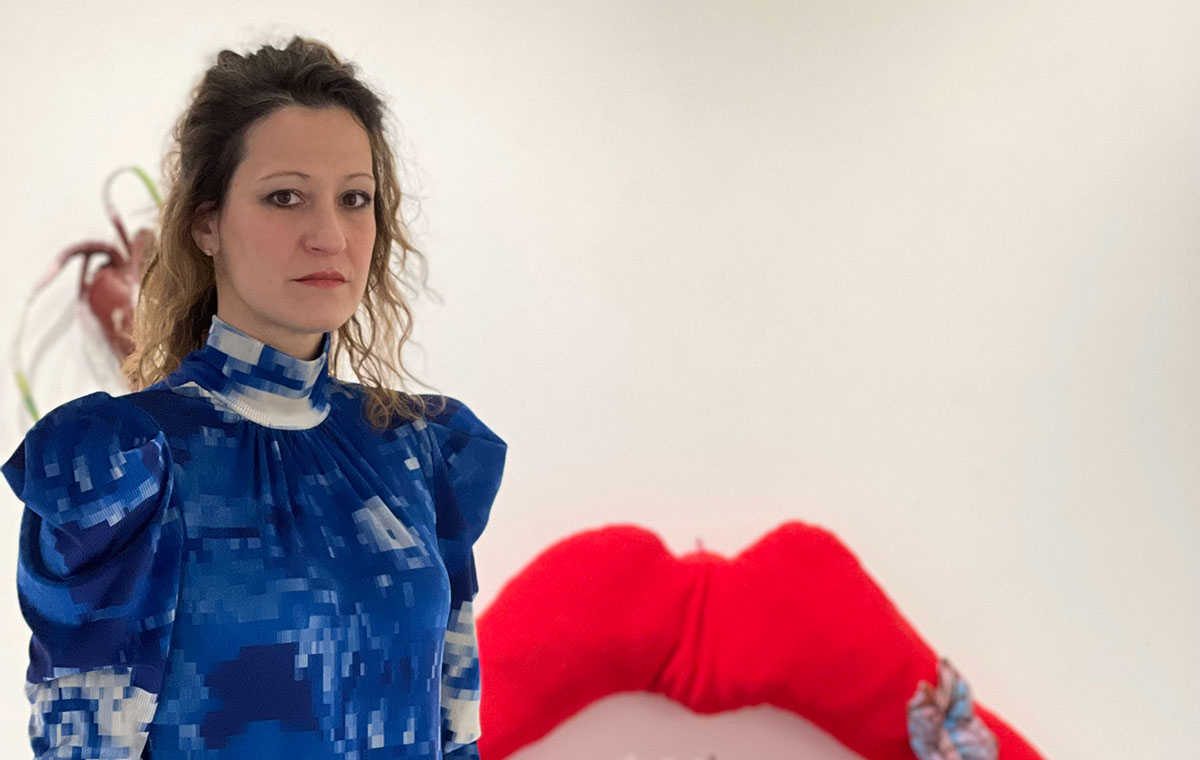
Mrs Yiayiannou, how and when the idea of the exhibition “ΓΗ-ΝΕΚΥΙΑ” exhibition started, why you chose the specific artists and what is the conceptual axis that unites their work?
Inside the title of the exhibition you can trace its conceptual center. Around it moves a planetary system of five visual sections with their own individual aesthetic atmosphere. The five artists have chosen me before I chose them! Some months before the beginning of the pandemic they reached to me with a demand: to join their powers in order to talk about the blossoming that follows every decay and vice versa. The cycle of life, as well as their relative artistic paths, brought them together. The discussion on identity in love, in passing of time, in gender, works here as a common ground. The important absent energy of the show, the male, is also with us, as a trace.
Although the exhibition seems to be a woman’s affair, it actually concerns us all, do you agree? What are the areas in which it expands?
I totally agree. This is not an exhibition addressing women, but an exhibition coming from women. It would be horrible if we only cared about what the representatives of our own gender are expressing. Biological and social, male, female or other, every sex and gender speak their important experience which is reflected on our actions and work, but this does not mean that it’s the most powerful voice coming from within. This exhibition concerns us all, in the manner that we are all concerned in the erotic body and its framing, the concept of identity and its traps, the shadow of war and its ruins, the domestic violence and its signs, the fear of ageing and death. And let’ s not forget about the aesthetic issue, which in art is not synonymous with surface but with depth.
We are going through a very difficult era, with a variety of issues and problems that unfortunately women once again are in the foreground. Do you think that the topics and issues that concerned and still concern women were resolved or were very well hidden and came to the fore at the first opportunity?
There are no worst images from those that come to us from the bombed Ukraine and its maternity hospital, which has become a symbol for this horrible, ominous era. Now, if you look at things from the calmness of a country that is not part of a war, you can start discussing about culture and social behaviors, for example sexism. I’ m afraid that sexism is deeply rooted even in the western societies and it’ s not easy to kick it out. Financial and employment discrimination, body and emotional violence, contempt on the female “characteristics” and homophobia. Even the old-school stereotype of the sexually devouring female is still worn on female beauty, even the most discrete. Men also suffocate under the pressure for success and the pressure for “independence”. I think that a current of reparation has begun to flow. The political correctness may go the extreme, but soon it will find a good balance.
Is it a matter of Education? Can the art provide solutions and what are they?
It’ s a matter of education, unquestionably. Teachers dread in front of issues of sex education and the State has not found the way to address that which is different. There are ways of art, knowledge and imagination to get there and I’ m optimistic. Let’ s not forget though that culture comes also from home. If we see ourselves as parents or just people carrying their own wisdom in the world, we ought to trust the paths of art. The artwork that stands before us in the gallery, the museum, the concert, the theatre, the book’ s page, even if it sometimes looks suspicious and not easy to grasp, is definitely what teaches us how to open a dialog with aspects of what is different, inside of us and in the world.
We asked the participating artists to explain us their artworks: We would like to describe us your artworks in the exhibition “ΓΗ–ΝΕΚΥΙΑ” and explain to us how they function autonomously but also how they are connected to the rest?
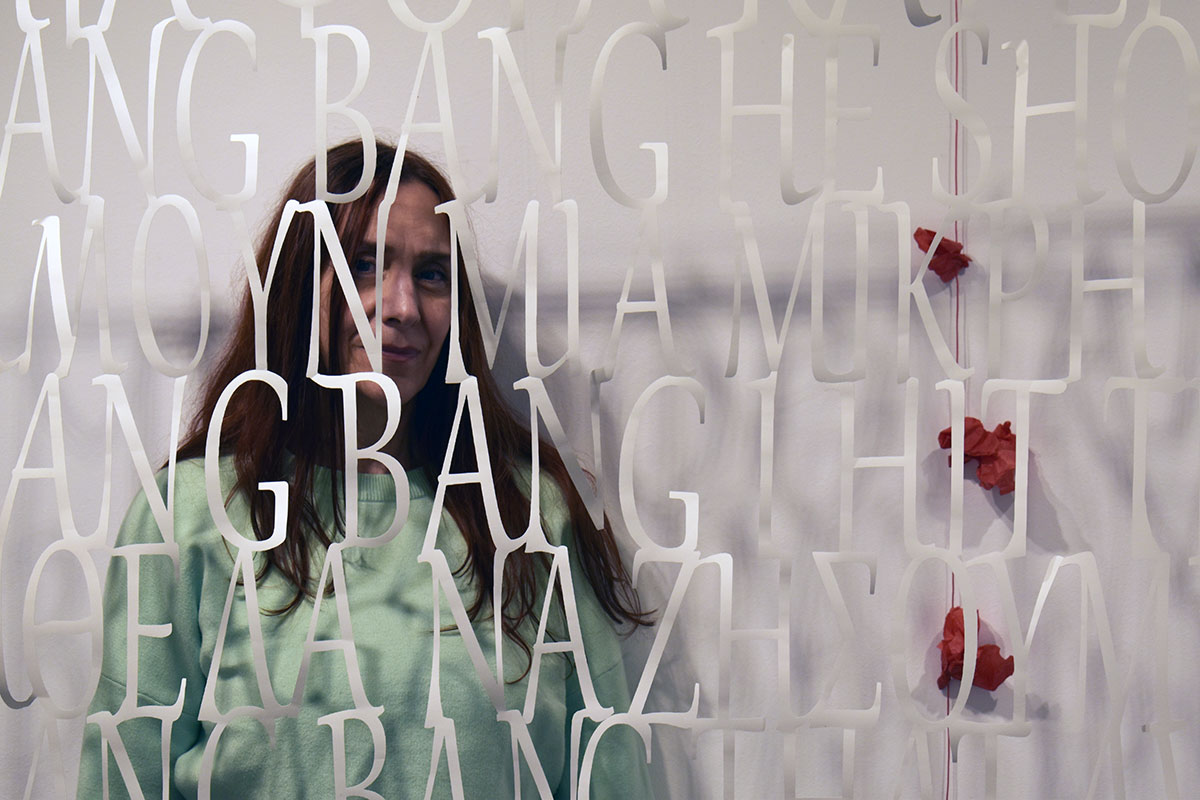
Starting off to work for the exhibit, I felt an urge to express myself on issues that were exacerbated, the last two years, due to the pandemic/lockdown, invading my personal life: exogenous developments were conversing with endogenous existential processes. This work of mine tackles the transition from the girlish stereotype for ever to the realisation and acceptance of the natural perishability of now. The transition mode varies: in certain works it takes place with a subdued violence which is not explicitly depicted. Time is momentary, terminal. In other ones, however, the transition takes place under the generous auspices of time, which may provide for the much-desired wisdom – but at the cost of decay. Figures, phrases, symbols, and verses are suspended on the whiteness of the paper. They will be cut and pasted, they will be transformed into lace and curtain, highlighting or shading truth. With the four artists with whom I exhibit, despite our superficial differences as regards size, materials and techniques, we have common artistic origins and quests. Our aesthetic affinities and anthropocentric approach are evident, even at the absence of female figures.
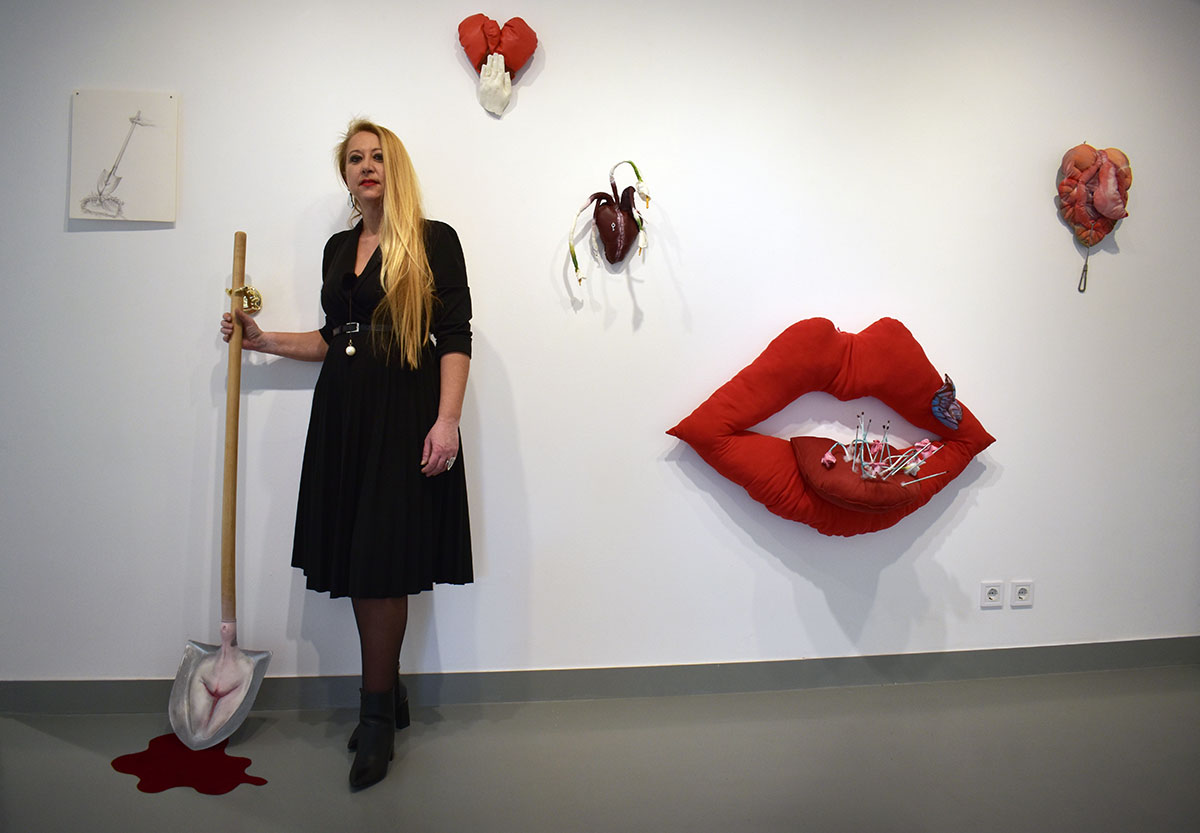
Love, the absolute and death, the inexorable. There, between the two beasts, my Surface-Underworld subsistence with mysterious, hellish, heavy and at the same time bright and aerial, like clouds, steps, search for redemption. With the beginning being my own experiences and with the weight of the feminine subsistence generally on my shoulders, I sewed, cut, pulled, caressed my materials, I found my center of mass and lost it again, I met my other half, I kissed it softly and fiercely, I said goodbye and welcomed it back in a perpetual dance. The shadows of Persephone, Ariadne, the fair Helen, Ophelia, Aretousa, Madam Bovari, Marina, all crouched above me, sometimes laughing and others crying. The works I present are the trace left by an autonomous, lone, endoscopic course, having both the feeling that every one of the other women-weavers in our exhibition, was each holding an end of the same skein.
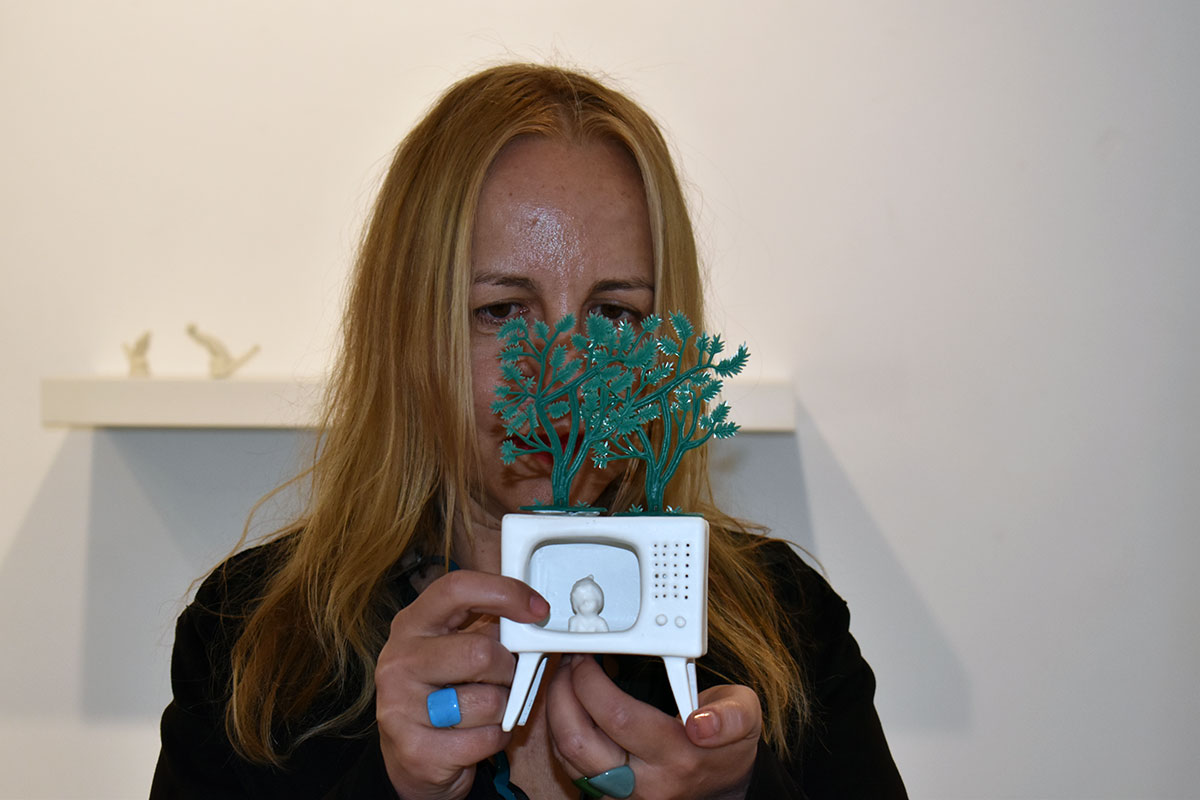
In my participation in the exhibition “ΓΗ-ΝΕΚΥΙΑ”, small-scale porcelain sculptures, compose a consolidated narrative with central theme, as the title of the exhibition dictates, the woman. My works with their fragile material negotiate and comment on collective and individual fears and concerns, timeless and contemporary. Their fragility is consistent with the issues they touch and attempt to negotiate. Their small scale provokes the viewer to approach very closely, to bend over them to listen to their comment, and to understand their story. The change of the expected norm, the synthesis of various forms and the roll-over of the body parts witnesse the mental and social imbalance. The overturn of the balance of the body scale and the seemingly unrealistic correlations intensifies the mood to decipher the riddle they imply. The overturning of the apparent balance is the challenge to interpret the reality from the beginning. The depiction of female identity from the beginning of a girl’s existence, the submission to a predestined life, the social order for adulthood, the inversion of the roles of adults-children, the marriage, the matching of heteronyms that are always gravitate, the oppression within social stereotypes, the pursuit of the personal path against the status quo, diversity, the motherly love as an alibi of oppression, lust, the AH of pleasure and pain, the eradication, the gender-based violence, the loneliness, the despair, the timeless oppression of women, her sacrifice for the benefit of patriarchy, mourning, decay, the end, are the topics that I try to negotiate in my work and they found the ideal place in the exhibition “ΓΗ-ΝΕΚΥΙΑ”.
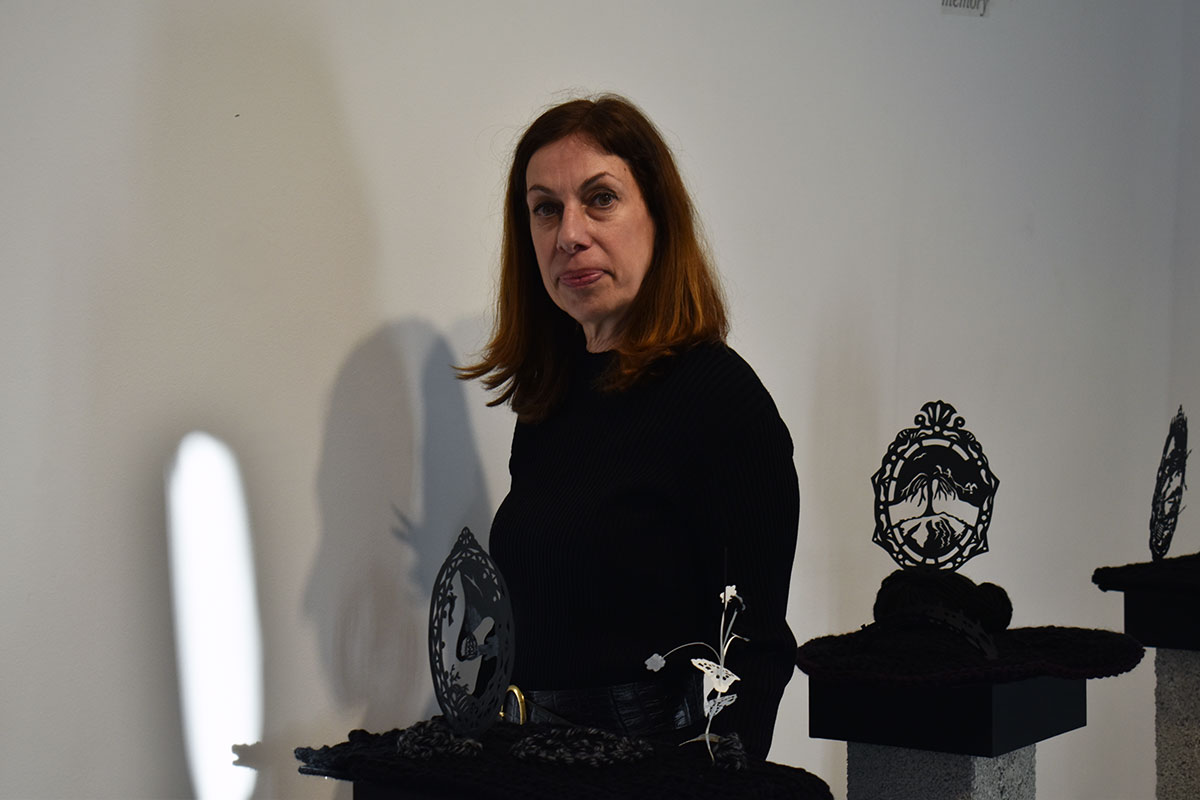
Each artwork is an autonomous entity from its birth because it is presented as the personal vision and creation of an artist. The aim is his presence to provoke a dialogue both with the viewer and with the other works. “This is not my memory” is an artwork that that the woman is not visible in the foreground. She stays back, in her agony for the “future”. A purely feminine reaction in contrast to the man who usually remains at the action level without compensating for the consequences. This artwork is a cry for exactly these consequences over the “world”. It is connected with the rest of the works in this exhibition as a feminine look that highlights a deeper meaning, perhaps a truth, on the occasion of the common theme, in a poetic way.
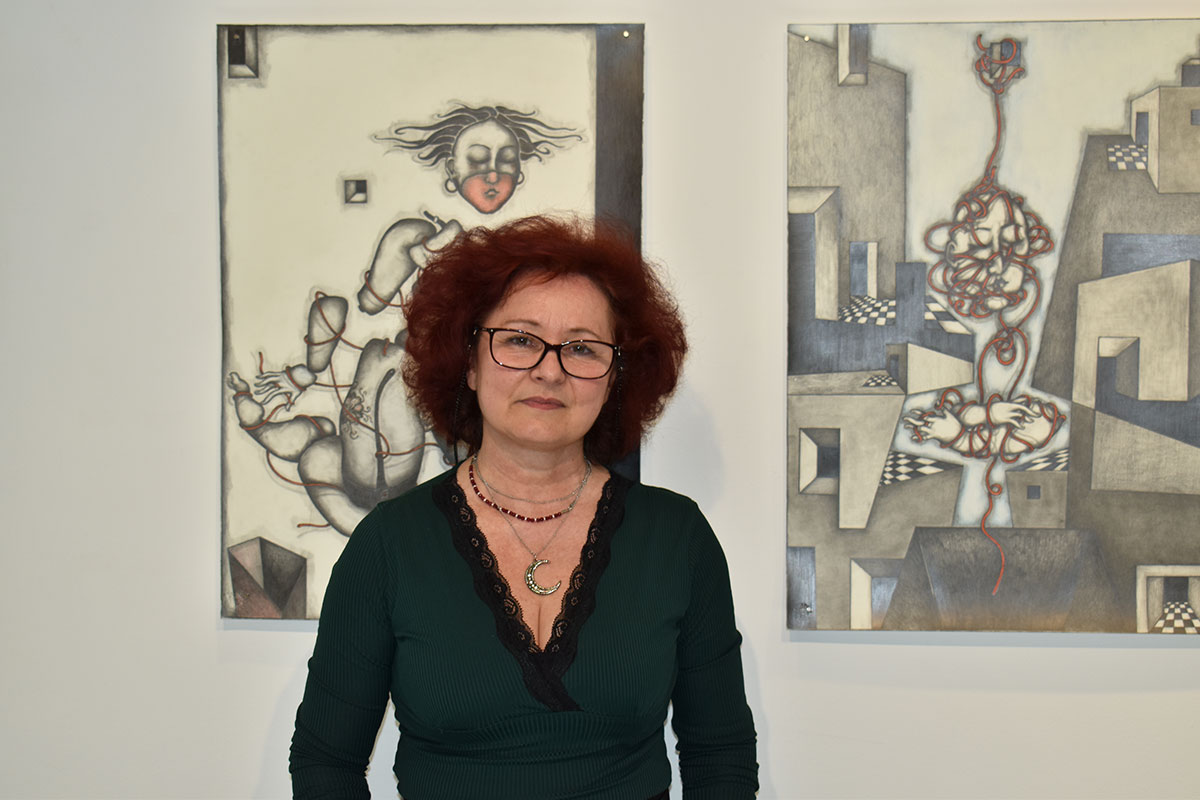
I based the reasoning on which I worked on these artworks, on the view that every event in life as well as every moment we live in, is a ritual, a small descent into Hades. A descent where Man seeks an answer to the existential question “how to continue …”. With the body in the leading role and the soul consenting. A body that suffers, that is affected, that is dismembered, that is assembled, that inflicts. Who is loved, who is hated, who is worn out, who dies, who trembles before the event of Death and who through Love … is “sanctified”. Because it is love that with its primordial power undertakes our acquaintance with death, being “death” itself. And I believe that the incrimination of sexuality is the most serious cause that man has been mentally and physically alienated and there are many derivatives of this alienation, with violence in all its forms, from the slightest daily abuse to the war itself. The universe we call Body for me functions as the common denominator in this exhibition. As the link that unites our work of art (with all the characteristics that distinguish the nature of a work of art), but also our different perceptions of everything that makes up life, through the weight of the responsibility that carries – in fact – our feminine nature.
Info: Curator: Maria Yiayiannou, The Project Gallery, 3 Normanou str, Monastiraki, Athens, Greece, Duration: 8/4-7/5/2022, Days & Hours: Wed-Fri 13:00-21:00, Sat-Sun 12:00-20:00, https://theprojectgallery.gr
